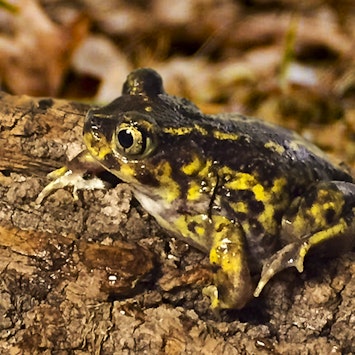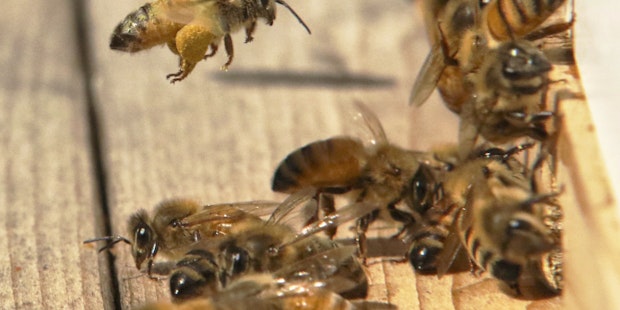Ask a Naturalist: What do frogs and toads do in winter?
Discovery Place Nature

Continuing our curiosity about how wildlife deals with the cold temperatures of winter, have you ever wondered what frogs and toads do during the winter?
Frogs and toads are cold-blooded, so their body temperatures take on the temperature of the environment around them. During the winter, they go into a state of hibernation, and some can be exposed to temperatures below freezing.
Aquatic frogs, like our own southern leopard frog (Rana pipiens), usually spend the winter at the bottom of a pond or other body of water. But they don’t burrow down into the mud. Frogs can be found hanging out on the bottom, sometimes even slowly swimming or moving around.
Frogs and toads that spend most of their time on land can usually burrow down below the frost line in burrows or cavities called hibernacula, or hibernating space. Some frogs, including various species of tree frogs, like spring peepers (Hyla crucifer), are not very good at burrowing. They go as deep as they can or squeeze into cavities, crevices and logs. In this case, sometimes the frog will actually freeze solid!
The danger in freezing is the formation of ice crystals that puncture cells and organs. But these frogs have high concentrations of glucose, or sugar, which is a natural antifreeze. Amazingly enough, their hearts actually stop beating. They stop breathing and have all the appearances of being dead.
Once the weather gets warm and things start to thaw out, the frog also will thaw. Its heart and lungs miraculously start working again, and the frog comes back to life.
Want to see some of these amazing amphibians up close? Stop by Creature Cavern to meet our resident frogs and toads.


